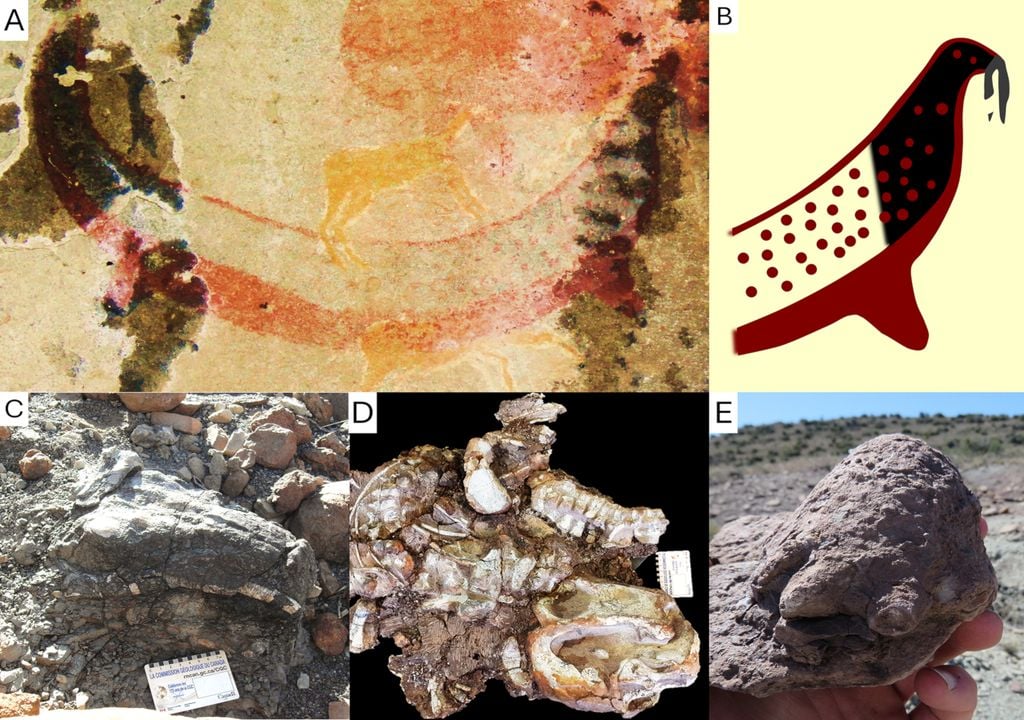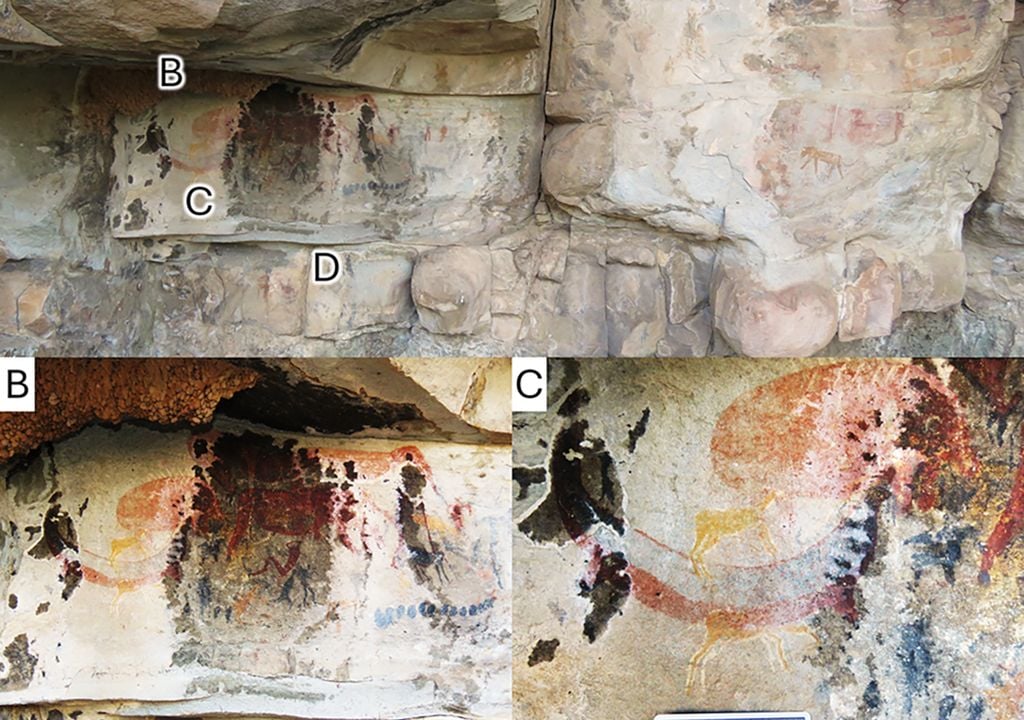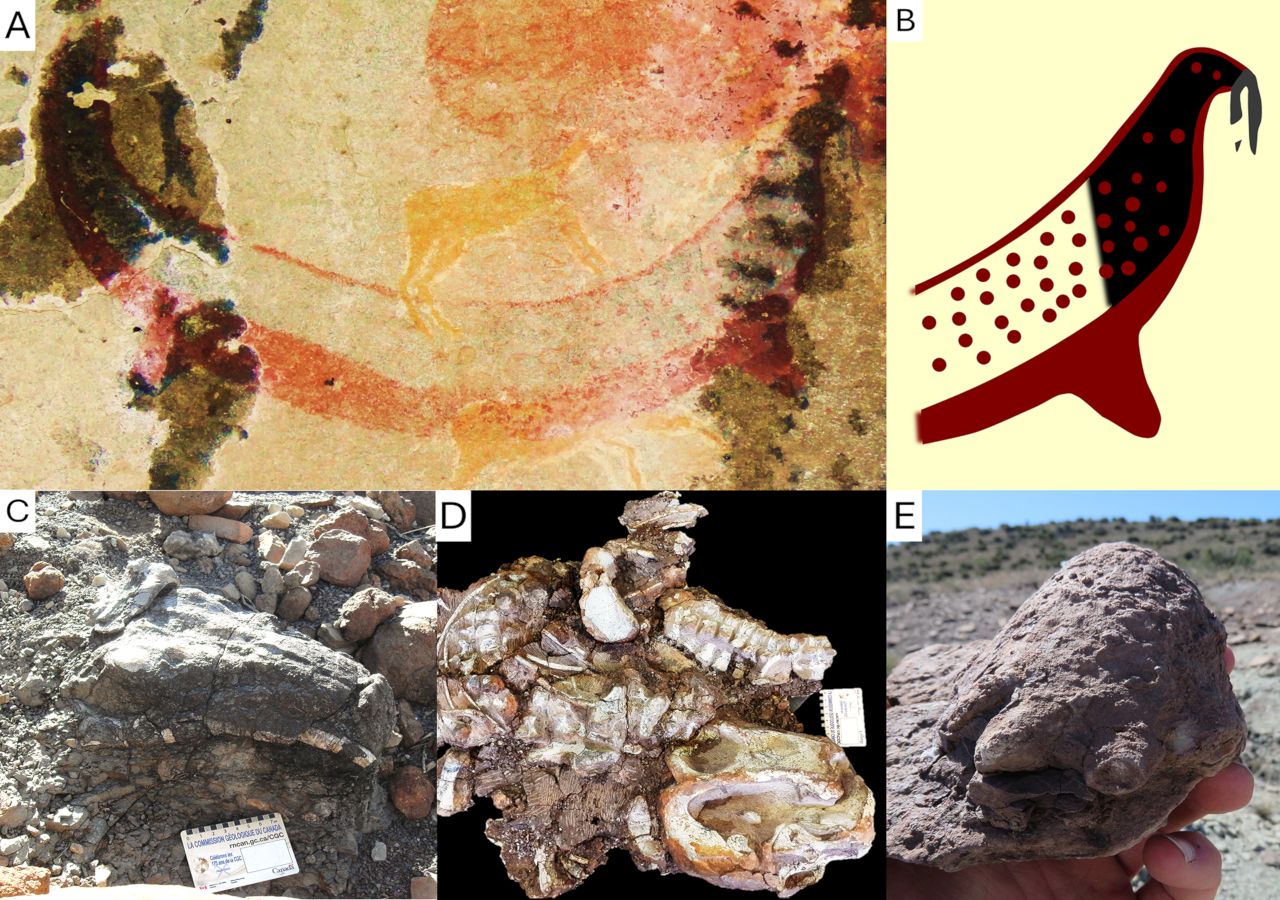You San She is one of The oldest indigenous people in Africawith a history dating back tens of thousands of years. They were mainly inhabited by Southern Africalike Kalahari DesertThe San people are known for their unique culture, which is traditionally based on a hunter-gatherer lifestyle.
one rock panelknown as Horned Serpent PaintingLocated in La Belle France (Free State Province, South Africa) He was It was drawn by the San at least two hundred years ago.It depicts, among other elements, an animal with tusks and a head resembling that of a dicynodont, the fossils of which are abundant and known from the Karoo Basin.
This painting appears to be related to a San myth about large animals that once roamed southern Africa and are now extinct. This suggests that the San may have incorporated local fossils in some way into their belief system.
Researchers confirmed the presence of this painting in La Belle, France, as well as the presence of tetrapod fossils nearby. All this points to a form of original paleontology.The painting has been dated to between 1821 and 1835, or possibly earlier, which means it is at least Ten years older than the first scientific description of the dicynodontthe Dicynodon larticipsmade in 1845.
The San discovered and understood fossils before science.
It is known that San Incorporate elements of the surrounding environment, including fossils, into your art.. Survey conducted by Julien Benoit of University of WitwatersrandIn Johannesburg, this interesting relationship is highlighted.

The team also displays Animals and other cultural elements related to the San peopleAmong the figures drawn, the most striking is precisely an animal with an elongated body and downward-pointing fangs, which is It does not match any of the modern species known in the region..
Benoit suggests that this fanged creature may have been inspired by a Extinct speciessuch as dicynodonts, which inhabited the area and whose fossils are often found. Karoo Basin.

It turns out that this famous basin An abundance of well-preserved fossils.It contains many fossils of tusked animals, known as dicynodonts, which were prehistoric herbivoresUpon reexamining the painting, Benoit found similarities between the painted figure and dicynodont fossils, an interpretation that also finds support in San myths about extinct animals.
If this figure does indeed represent a dicynodont, it means that the San had “discovered” these fossils and interpreted them artistically long before Western science.
Although there is archaeological evidence that the San may have collected fossils and incorporated these finds into their art, The level of indigenous paleontological knowledge is still not well understood.Future research into indigenous cultures around the world may reveal more about how humans have integrated fossils into their cultural and religious traditions.
In fact, the painting was painted in 1835 at the latest, which means that This dicynodont was photographed at least ten years before the first dicynodont was discovered and scientifically named.carried out by Richard Owen in 1845. This work reinforces the idea that the first inhabitants of South Africa discovered fossils, were able to interpret them and incorporate their representations into their rock art and belief system.
News Reference:
Julien Benoit. Possible Late Stone Age painting of a dicynodont (Synapsida) from the Karoo, South Africa..PLOS ONE, 2024;19.

“Wannabe internet buff. Future teen idol. Hardcore zombie guru. Gamer. Avid creator. Entrepreneur. Bacon ninja.”

